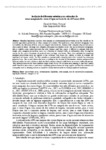Por favor, use este identificador para citar o enlazar este ítem:
http://www.alice.cnptia.embrapa.br/alice/handle/doc/902343Registro completo de metadatos
| Campo DC | Valor | Lengua/Idioma |
|---|---|---|
| dc.contributor.author | VICTORIA, D. de C. | pt_BR |
| dc.contributor.author | MELLO, J. S. de | pt_BR |
| dc.date.accessioned | 2011-10-04T11:11:11Z | pt_BR |
| dc.date.accessioned | 2011-10-04T11:11:11Z | pt_BR |
| dc.date.available | 2011-10-04T11:11:11Z | pt_BR |
| dc.date.available | 2011-10-04T11:11:11Z | pt_BR |
| dc.date.created | 2011-10-04 | pt_BR |
| dc.date.issued | 2011 | pt_BR |
| dc.identifier.citation | In: SIMPÓSIO BRASILEIRO DE SENSORIAMENTO REMOTO, 15., 2011, Curitiba. Anais... São José dos Campos: INPE, 2011. | pt_BR |
| dc.identifier.uri | http://www.alice.cnptia.embrapa.br/alice/handle/doc/902343 | pt_BR |
| dc.description | Brazilian legislation considers river margins as environmental preservation areas that should not be used for agricultural production or other commercial activities. For small areas, were detailed cartographic data is available, the definition of these areas are simpler tasks however, Country wide estimates of protected area is still a mater of debate. For large area estimates, two mains uncertainties occur. The lack of detailed cartographic data at suitable scales under-represents the river channels and thus, makes it difficult to estimate total river length. Also, marginal preservation areas are a function of channel width, an information often lacking but crucial for the correct estimation of protected areas in large river basins. Here, three methods for estimating marginal preservation areas are applied to the Ji-Paraná river basin (RO, Brazil) in order to evaluate the importance of channel width. The first considers a constant width along the entire river network for estimating preserved area. The second divides the basin according to the location of fluviometric stations and prescribes different widths for each sub-basin while the third estimates channel width based on an area:width relationship. Total protected area for the three methods ranges from 2% to 21% of basin area, making it clear that channel width should be taken into account when estimating protected areas for large regions and that the methods and assumption used in defining such areas should be clearly stated in order to avoid precipitated conclusions. | pt_BR |
| dc.language.iso | eng | eng |
| dc.rights | openAccess | eng |
| dc.subject | Área de preservação permanente | pt_BR |
| dc.subject | Lesgislação ambiental | pt_BR |
| dc.subject | Margem de rio | pt_BR |
| dc.title | Avaliação de diferentes métodos para estimativa de áreas marginais de cursos d'água na bacia do rio Ji-Paraná (RO). | pt_BR |
| dc.type | Artigo em anais e proceedings | pt_BR |
| dc.date.updated | 2019-05-03T11:11:11Z | pt_BR |
| dc.format.extent2 | p. 3890-3897. | pt_BR |
| riaa.ainfo.id | 902343 | pt_BR |
| riaa.ainfo.lastupdate | 2019-05-03 -03:00:00 | pt_BR |
| dc.contributor.institution | DANIEL DE CASTRO VICTORIA, CNPM; JULIA SANGUINETTI DE MELLO, Bolsista/CNPM. | pt_BR |
| Aparece en las colecciones: | Artigo em anais de congresso (CNPM)  | |
Ficheros en este ítem:
| Fichero | Descripción | Tamaño | Formato | |
|---|---|---|---|---|
| DanielV1SBSR.pdf | 1.2 MB | Adobe PDF |  Visualizar/Abrir |









